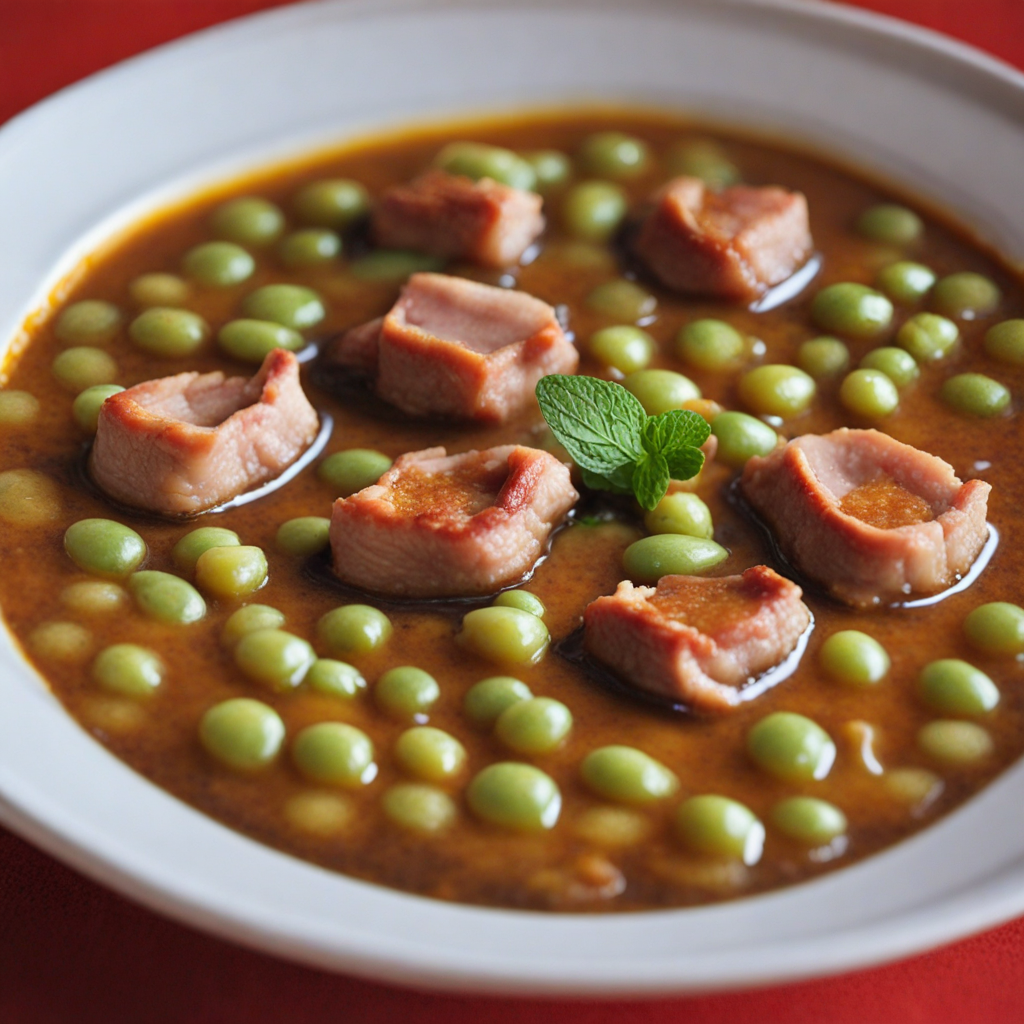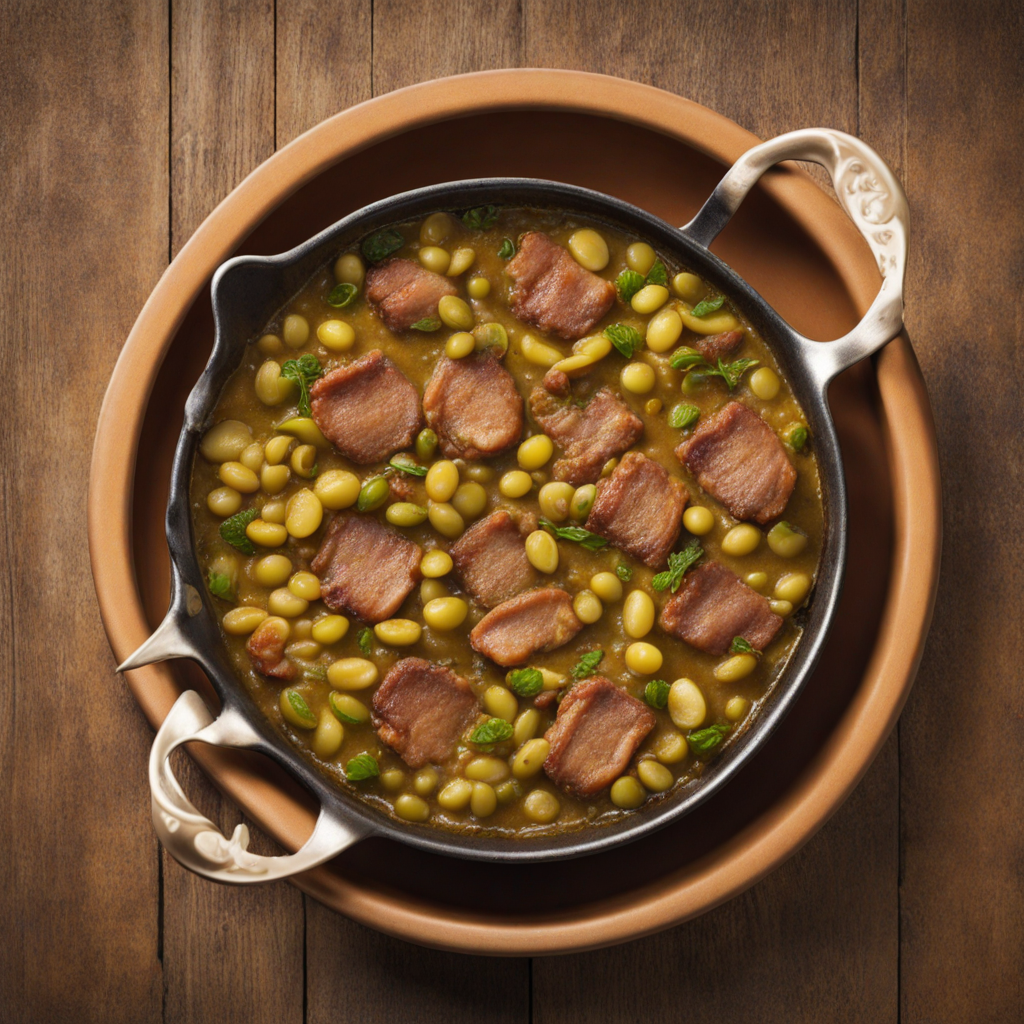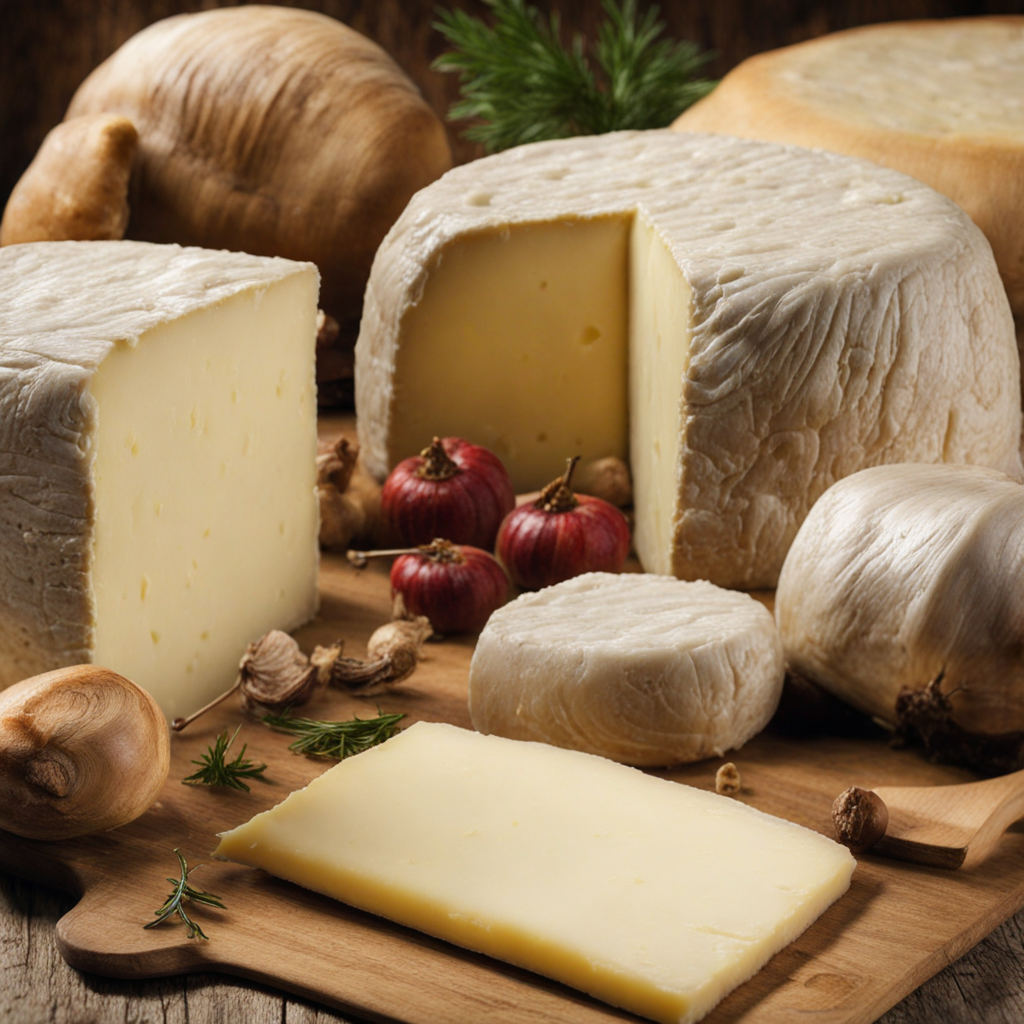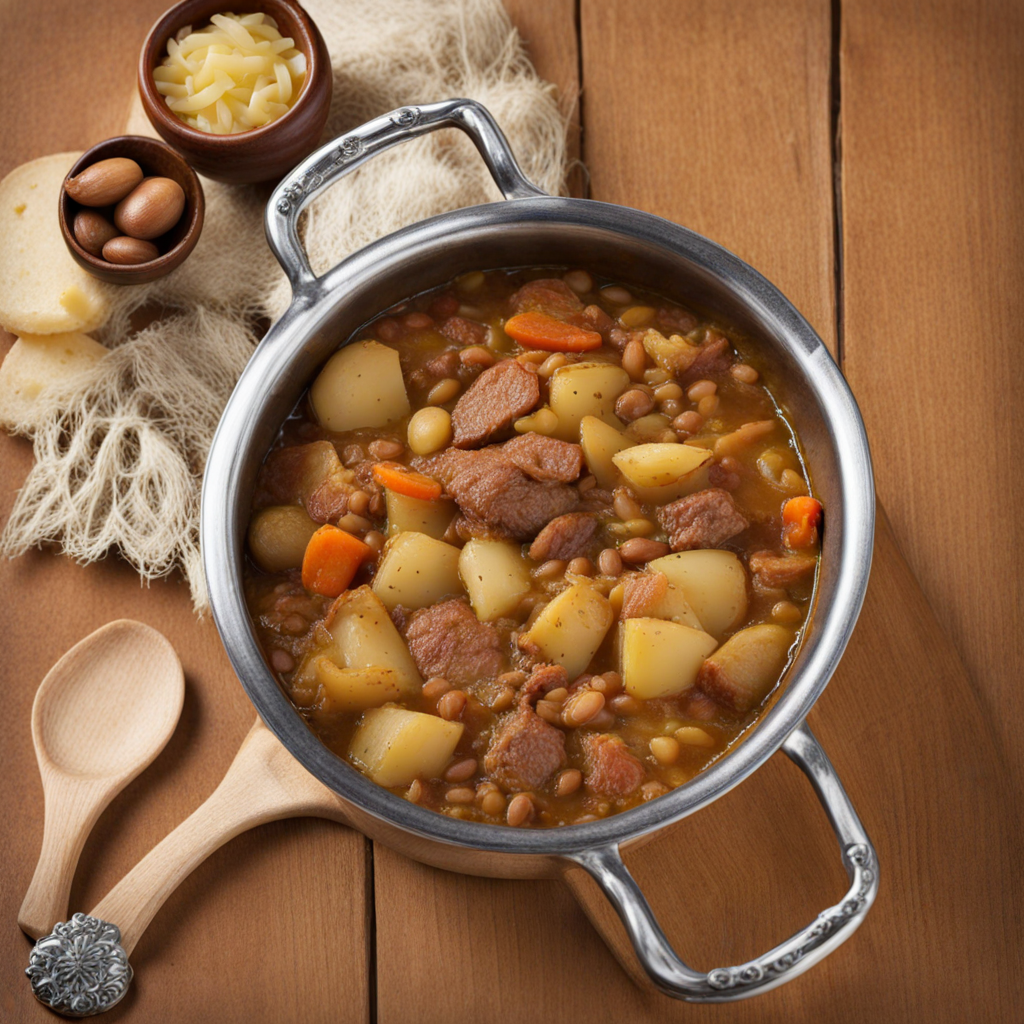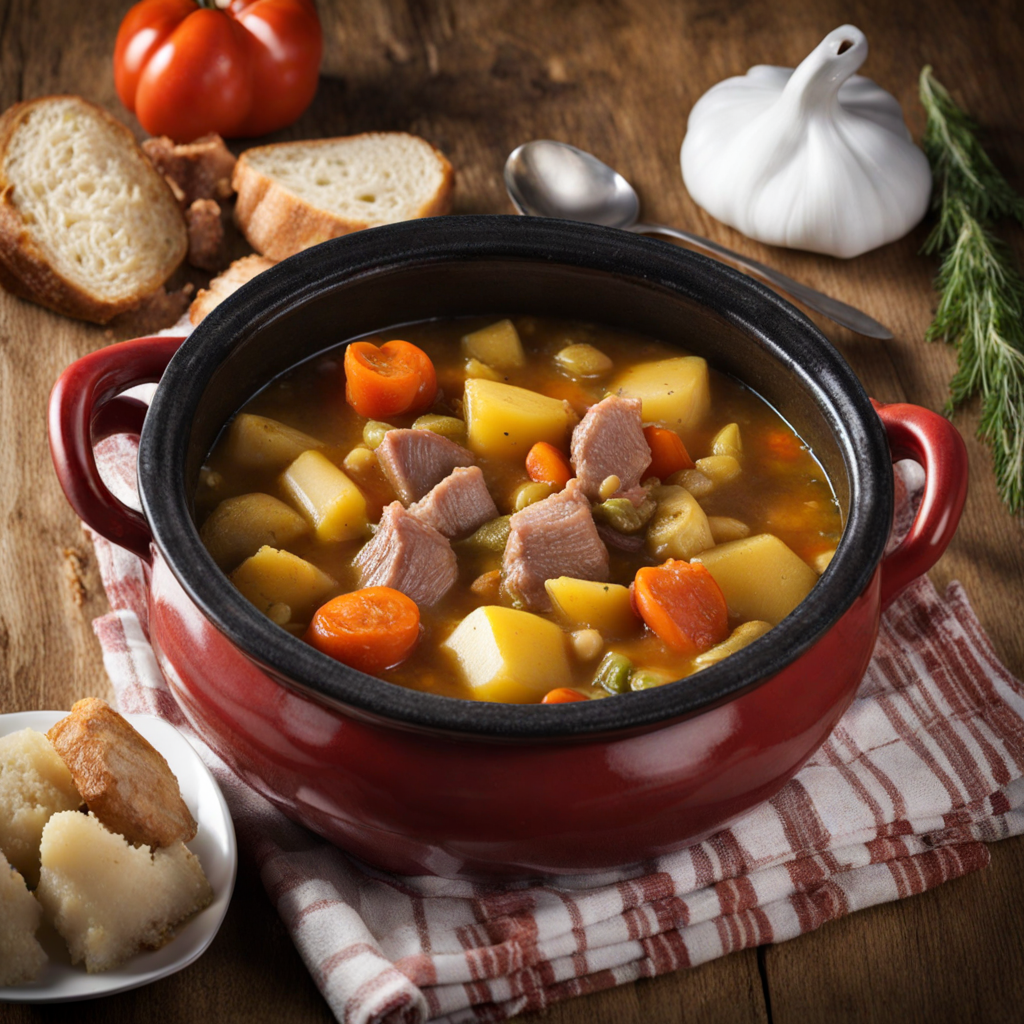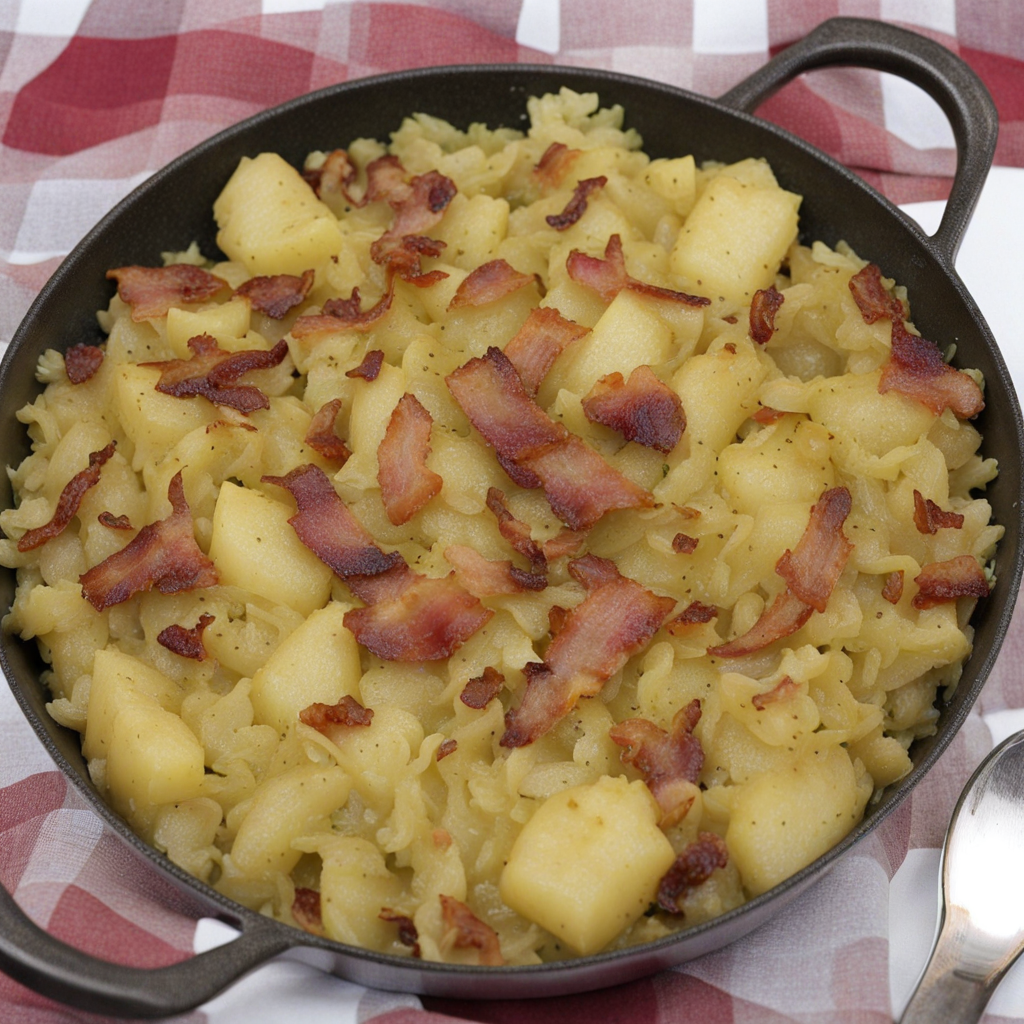Faves a la catalana
Faves a la catalana is a delightful dish that showcases the rich culinary traditions of Andorra, blending rustic flavors with hearty ingredients. At its core, this dish features fava beans, which are known for their creamy texture and slightly nutty taste. The beans are typically cooked until tender and then combined with a medley of ingredients such as garlic, onions, and sometimes ripe tomatoes, creating a fragrant base that enhances the natural flavors of the favas. The dish is often seasoned with fresh herbs, adding a vibrant touch that balances the richness of the beans. One of the standout features of Faves a la catalana is its versatility. While traditional recipes may include chorizo or ham for added depth and a hint of smokiness, vegetarian versions are equally popular, allowing the dish to cater to a wider audience. The fusion of flavors creates a comforting and satisfying meal, perfect for sharing around the table with family and friends. The inclusion of local Andorran ingredients elevates the dish, highlighting the region’s agricultural bounty and commitment to fresh, seasonal produce. The presentation of Faves a la catalana is as inviting as its flavors. Served in a rustic bowl, the vibrant green of the fava beans contrasts beautifully with the earthy tones of the other ingredients. A drizzle of olive oil on top can enhance the dish further, giving it a glossy finish and a rich aroma. Whether enjoyed as a warm starter or a main course, Faves a la catalana invites diners to savor each bite, making it a perfect choice for those looking to experience the authentic tastes of Andorra.
How It Became This Dish
Faves a la Catalana: A Culinary Journey Through Andorra's Heritage #### Introduction Faves a la catalana, a dish that exemplifies the rich culinary heritage of Andorra, is a testament to the region's agricultural bounty and cultural intersections. This traditional dish, which translates to "Catalan-style broad beans," is not merely a meal; it is a narrative woven into the fabric of Andorra's history, illustrating the interplay of geography, culture, and community. #### Origins and Historical Context The origins of faves a la catalana can be traced back to the broad bean (Vicia faba), a staple legume cultivated in Mediterranean regions for thousands of years. Archaeological evidence suggests that broad beans were among the first crops domesticated by humans, dating back to around 6000 BCE in the Near East. Their adaptability and nutritional value made them a favored crop throughout Europe, particularly in regions like Catalonia and the Pyrenees, where Andorra is situated. Andorra, a small principality nestled between France and Spain, has a unique cultural identity shaped by its geographical isolation and historical influences. The Principality has been a crossroads of various cultures, including the Romans, Visigoths, and Moors, each leaving a mark on the local cuisine. The integration of the broad bean into Andorran cooking reflects this blend of influences, embodying a dish that is both simple and significant. #### Cultural Significance Faves a la catalana is not just a culinary delight; it is a dish steeped in cultural significance. In Andorra, food is a vital expression of community and identity. Meals are often communal events, bringing families and friends together to share not only food but stories and traditions. Faves a la catalana embodies this spirit of togetherness, often served during family gatherings, celebrations, and festivals. The dish's preparation is a communal effort, with family members participating in the process of shelling the beans, preparing the sauce, and cooking the dish. This collaborative approach underscores the importance of family bonds and cultural continuity in Andorran society. Moreover, faves a la catalana is emblematic of the region's agricultural heritage. It utilizes locally sourced ingredients, showcasing the practice of farm-to-table cooking that has been prevalent in Andorra for centuries. The use of fresh, seasonal produce not only reflects the culinary practices of the past but also highlights the contemporary movement towards sustainability and local food sourcing. #### Ingredients and Preparation Traditionally, faves a la catalana is prepared with broad beans, which are often harvested in late spring or early summer when they are young and tender. The dish typically includes a combination of ingredients such as onions, tomatoes, and various herbs, often seasoned with olive oil and sometimes accompanied by pieces of meat, such as pork or sausages, to enhance the flavor profile. The preparation involves the following steps: 1. Shelling the Beans: Fresh broad beans are shelled to remove their tough outer pods. This process is often a family activity, with members gathering to chat and enjoy each other's company. 2. Sautéing the Base: In a large pan, onions and tomatoes are sautéed in olive oil until they soften and release their flavors. Garlic may also be added for an aromatic kick. 3. Cooking the Beans: The shelled beans are then added to the pan along with water or vegetable broth, allowing them to simmer until tender. This slow cooking process allows the flavors to meld beautifully. 4. Final Touches: Depending on regional variations, pieces of meat such as pork or sausages may be added during the cooking process, enriching the dish with additional depth. Fresh herbs are often sprinkled on top before serving for an extra burst of flavor. #### Evolution Over Time Faves a la catalana has evolved over the years, adapting to changes in agricultural practices, availability of ingredients, and the influence of modern culinary trends. In the 20th century, as Andorra became more integrated into the broader European culinary scene, the dish began to incorporate more diverse flavors and ingredients, reflecting the changing palates of its inhabitants. The rise of tourism in Andorra has also played a role in the evolution of faves a la catalana. As visitors from different parts of the world explore Andorra's culinary offerings, local chefs have innovated traditional recipes to cater to a wider audience while maintaining the essence of the dish. This fusion of traditional and contemporary practices has given rise to new interpretations of faves a la catalana, incorporating elements such as spices and international flavors that were previously uncommon in Andorran cuisine. Moreover, the growing emphasis on sustainability and local sourcing has led to a resurgence in traditional cooking methods. Many Andorran chefs are returning to their roots, emphasizing local ingredients and rediscovering forgotten recipes. Faves a la catalana is often featured on menus as a symbol of Andorra's culinary identity, celebrating its agricultural heritage while embracing a modern culinary ethos. #### Contemporary Relevance Today, faves a la catalana remains a cherished dish in Andorra, celebrated for its comforting flavors and cultural significance. It is often prepared during festive occasions, such as the Feast of Saint George, where families come together to honor their traditions. The dish also finds its way into restaurants that strive to showcase the best of Andorran cuisine, offering a taste of the region's history to both locals and tourists alike. In recent years, there has been a growing interest in preserving traditional Andorran recipes and culinary practices. Organizations dedicated to promoting Andorra's cultural heritage have begun to document and share recipes like faves a la catalana, ensuring that future generations can connect with their culinary roots. #### Conclusion Faves a la catalana is more than just a dish; it is a culinary embodiment of Andorra's history, culture, and community. From its humble origins as a staple legume to its place on modern menus, this dish tells a story of resilience, adaptation, and celebration. As Andorrans continue to gather around the table to enjoy faves a la catalana, they reaffirm their connection to their land, their history, and each other—one flavorful bite at a time.
You may like
Discover local flavors from Andorra


